Shuowen Hu
Adapting Vehicle Detectors for Aerial Imagery to Unseen Domains with Weak Supervision
Jul 28, 2025Abstract:Detecting vehicles in aerial imagery is a critical task with applications in traffic monitoring, urban planning, and defense intelligence. Deep learning methods have provided state-of-the-art (SOTA) results for this application. However, a significant challenge arises when models trained on data from one geographic region fail to generalize effectively to other areas. Variability in factors such as environmental conditions, urban layouts, road networks, vehicle types, and image acquisition parameters (e.g., resolution, lighting, and angle) leads to domain shifts that degrade model performance. This paper proposes a novel method that uses generative AI to synthesize high-quality aerial images and their labels, improving detector training through data augmentation. Our key contribution is the development of a multi-stage, multi-modal knowledge transfer framework utilizing fine-tuned latent diffusion models (LDMs) to mitigate the distribution gap between the source and target environments. Extensive experiments across diverse aerial imagery domains show consistent performance improvements in AP50 over supervised learning on source domain data, weakly supervised adaptation methods, unsupervised domain adaptation methods, and open-set object detectors by 4-23%, 6-10%, 7-40%, and more than 50%, respectively. Furthermore, we introduce two newly annotated aerial datasets from New Zealand and Utah to support further research in this field. Project page is available at: https://humansensinglab.github.io/AGenDA
2D-3D Attention and Entropy for Pose Robust 2D Facial Recognition
May 14, 2025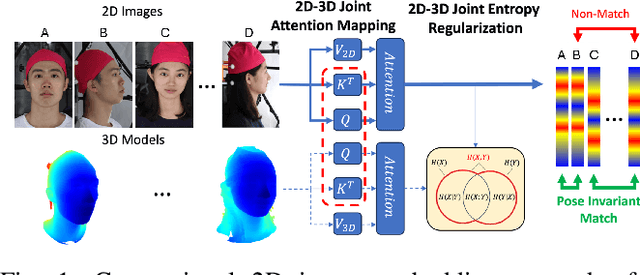



Abstract:Despite recent advances in facial recognition, there remains a fundamental issue concerning degradations in performance due to substantial perspective (pose) differences between enrollment and query (probe) imagery. Therefore, we propose a novel domain adaptive framework to facilitate improved performances across large discrepancies in pose by enabling image-based (2D) representations to infer properties of inherently pose invariant point cloud (3D) representations. Specifically, our proposed framework achieves better pose invariance by using (1) a shared (joint) attention mapping to emphasize common patterns that are most correlated between 2D facial images and 3D facial data and (2) a joint entropy regularizing loss to promote better consistency$\unicode{x2014}$enhancing correlations among the intersecting 2D and 3D representations$\unicode{x2014}$by leveraging both attention maps. This framework is evaluated on FaceScape and ARL-VTF datasets, where it outperforms competitive methods by achieving profile (90$\unicode{x00b0}$$\unicode{x002b}$) TAR @ 1$\unicode{x0025}$ FAR improvements of at least 7.1$\unicode{x0025}$ and 1.57$\unicode{x0025}$, respectively.
A Brief Survey on Person Recognition at a Distance
Dec 17, 2022



Abstract:Person recognition at a distance entails recognizing the identity of an individual appearing in images or videos collected by long-range imaging systems such as drones or surveillance cameras. Despite recent advances in deep convolutional neural networks (DCNNs), this remains challenging. Images or videos collected by long-range cameras often suffer from atmospheric turbulence, blur, low-resolution, unconstrained poses, and poor illumination. In this paper, we provide a brief survey of recent advances in person recognition at a distance. In particular, we review recent work in multi-spectral face verification, person re-identification, and gait-based analysis techniques. Furthermore, we discuss the merits and drawbacks of existing approaches and identify important, yet under explored challenges for deploying remote person recognition systems in-the-wild.
Learning Domain and Pose Invariance for Thermal-to-Visible Face Recognition
Nov 17, 2022Abstract:Interest in thermal to visible face recognition has grown significantly over the last decade due to advancements in thermal infrared cameras and analytics beyond the visible spectrum. Despite large discrepancies between thermal and visible spectra, existing approaches bridge domain gaps by either synthesizing visible faces from thermal faces or by learning the cross-spectrum image representations. These approaches typically work well with frontal facial imagery collected at varying ranges and expressions, but exhibit significantly reduced performance when matching thermal faces with varying poses to frontal visible faces. We propose a novel Domain and Pose Invariant Framework that simultaneously learns domain and pose invariant representations. Our proposed framework is composed of modified networks for extracting the most correlated intermediate representations from off-pose thermal and frontal visible face imagery, a sub-network to jointly bridge domain and pose gaps, and a joint-loss function comprised of cross-spectrum and pose-correction losses. We demonstrate efficacy and advantages of the proposed method by evaluating on three thermal-visible datasets: ARL Visible-to-Thermal Face, ARL Multimodal Face, and Tufts Face. Although DPIF focuses on learning to match off-pose thermal to frontal visible faces, we also show that DPIF enhances performance when matching frontal thermal face images to frontal visible face images.
Open-Set Automatic Target Recognition
Nov 10, 2022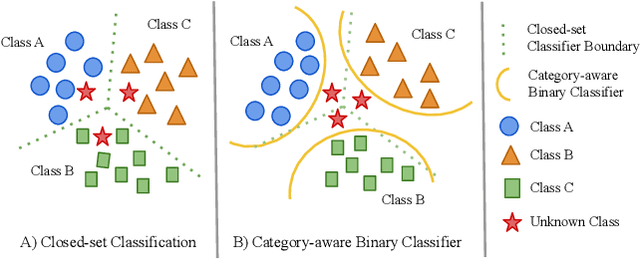

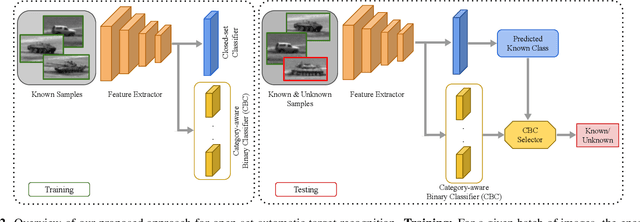

Abstract:Automatic Target Recognition (ATR) is a category of computer vision algorithms which attempts to recognize targets on data obtained from different sensors. ATR algorithms are extensively used in real-world scenarios such as military and surveillance applications. Existing ATR algorithms are developed for traditional closed-set methods where training and testing have the same class distribution. Thus, these algorithms have not been robust to unknown classes not seen during the training phase, limiting their utility in real-world applications. To this end, we propose an Open-set Automatic Target Recognition framework where we enable open-set recognition capability for ATR algorithms. In addition, we introduce a plugin Category-aware Binary Classifier (CBC) module to effectively tackle unknown classes seen during inference. The proposed CBC module can be easily integrated with any existing ATR algorithms and can be trained in an end-to-end manner. Experimental results show that the proposed approach outperforms many open-set methods on the DSIAC and CIFAR-10 datasets. To the best of our knowledge, this is the first work to address the open-set classification problem for ATR algorithms. Source code is available at: https://github.com/bardisafa/Open-set-ATR.
DefakeHop++: An Enhanced Lightweight Deepfake Detector
Apr 30, 2022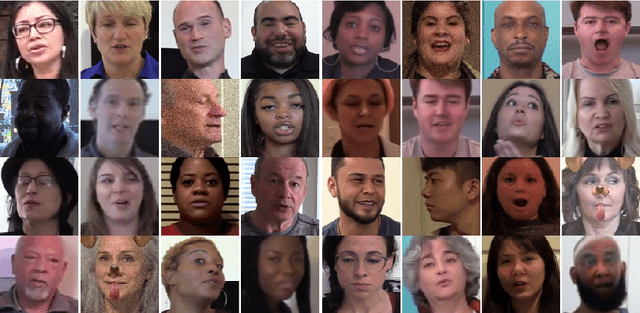
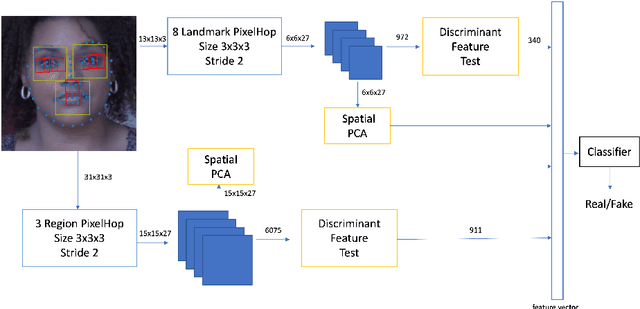
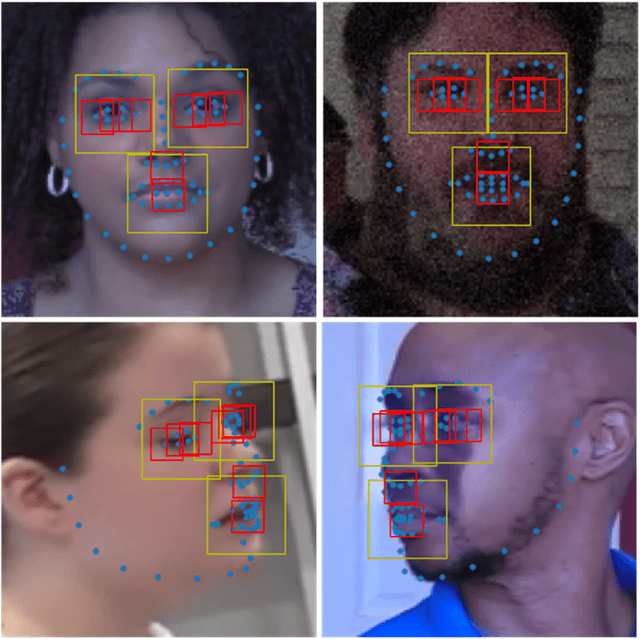
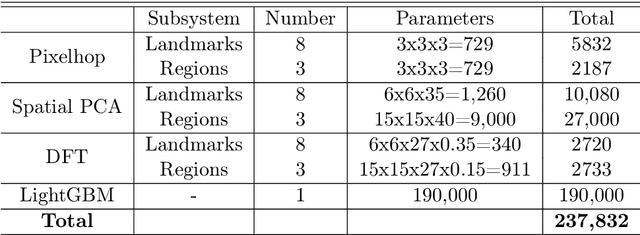
Abstract:On the basis of DefakeHop, an enhanced lightweight Deepfake detector called DefakeHop++ is proposed in this work. The improvements lie in two areas. First, DefakeHop examines three facial regions (i.e., two eyes and mouth) while DefakeHop++ includes eight more landmarks for broader coverage. Second, for discriminant features selection, DefakeHop uses an unsupervised approach while DefakeHop++ adopts a more effective approach with supervision, called the Discriminant Feature Test (DFT). In DefakeHop++, rich spatial and spectral features are first derived from facial regions and landmarks automatically. Then, DFT is used to select a subset of discriminant features for classifier training. As compared with MobileNet v3 (a lightweight CNN model of 1.5M parameters targeting at mobile applications), DefakeHop++ has a model of 238K parameters, which is 16% of MobileNet v3. Furthermore, DefakeHop++ outperforms MobileNet v3 in Deepfake image detection performance in a weakly-supervised setting.
Geo-DefakeHop: High-Performance Geographic Fake Image Detection
Oct 19, 2021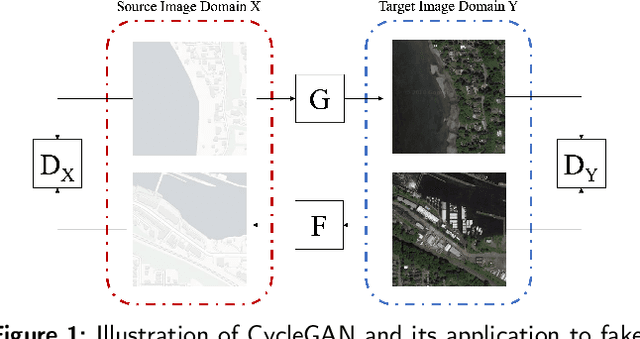
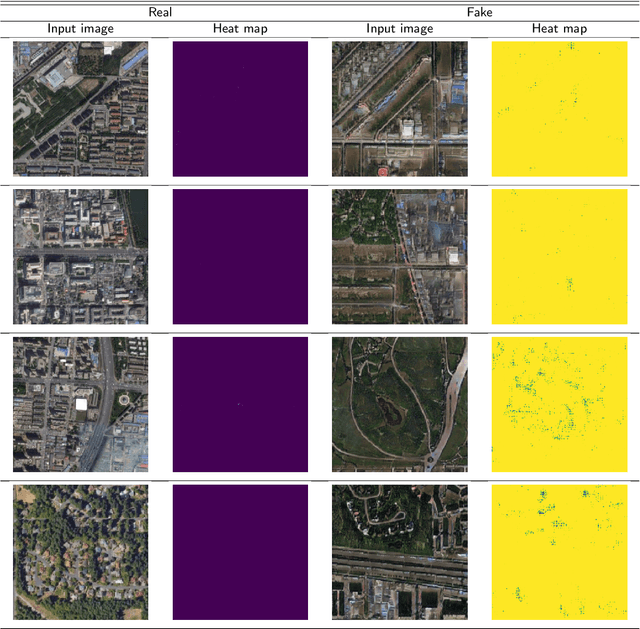
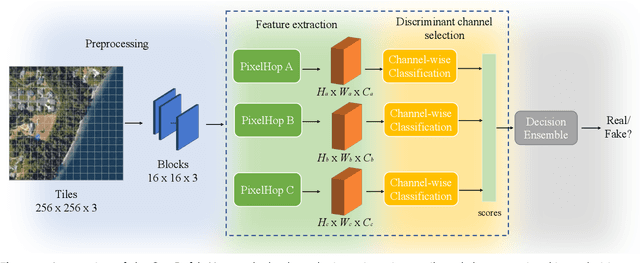
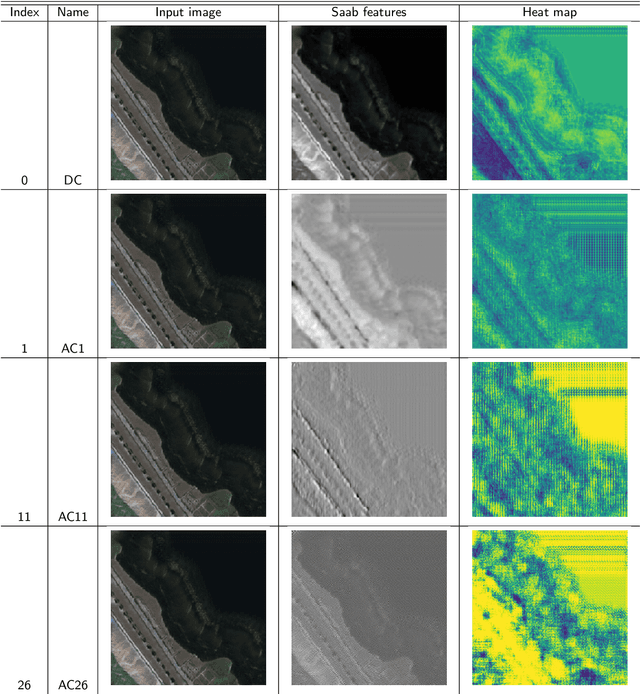
Abstract:A robust fake satellite image detection method, called Geo-DefakeHop, is proposed in this work. Geo-DefakeHop is developed based on the parallel subspace learning (PSL) methodology. PSL maps the input image space into several feature subspaces using multiple filter banks. By exploring response differences of different channels between real and fake images for a filter bank, Geo-DefakeHop learns the most discriminant channels and uses their soft decision scores as features. Then, Geo-DefakeHop selects a few discriminant features from each filter bank and ensemble them to make a final binary decision. Geo-DefakeHop offers a light-weight high-performance solution to fake satellite images detection. Its model size is analyzed, which ranges from 0.8 to 62K parameters. Furthermore, it is shown by experimental results that it achieves an F1-score higher than 95\% under various common image manipulations such as resizing, compression and noise corruption.
Meta-UDA: Unsupervised Domain Adaptive Thermal Object Detection using Meta-Learning
Oct 07, 2021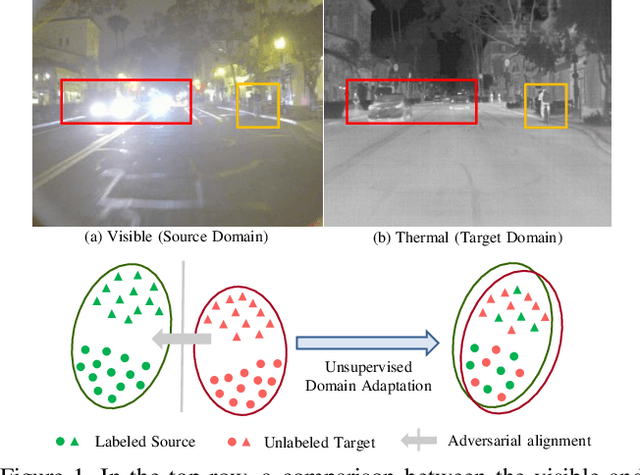
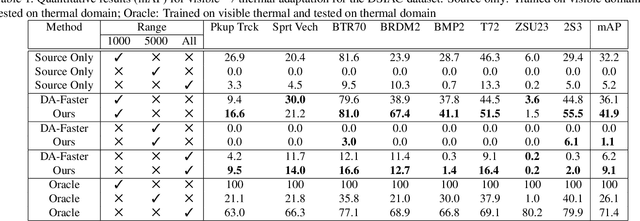

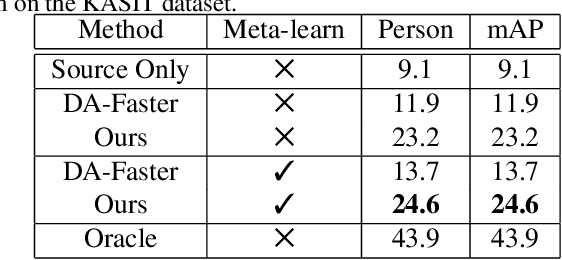
Abstract:Object detectors trained on large-scale RGB datasets are being extensively employed in real-world applications. However, these RGB-trained models suffer a performance drop under adverse illumination and lighting conditions. Infrared (IR) cameras are robust under such conditions and can be helpful in real-world applications. Though thermal cameras are widely used for military applications and increasingly for commercial applications, there is a lack of robust algorithms to robustly exploit the thermal imagery due to the limited availability of labeled thermal data. In this work, we aim to enhance the object detection performance in the thermal domain by leveraging the labeled visible domain data in an Unsupervised Domain Adaptation (UDA) setting. We propose an algorithm agnostic meta-learning framework to improve existing UDA methods instead of proposing a new UDA strategy. We achieve this by meta-learning the initial condition of the detector, which facilitates the adaptation process with fine updates without overfitting or getting stuck at local optima. However, meta-learning the initial condition for the detection scenario is computationally heavy due to long and intractable computation graphs. Therefore, we propose an online meta-learning paradigm which performs online updates resulting in a short and tractable computation graph. To this end, we demonstrate the superiority of our method over many baselines in the UDA setting, producing a state-of-the-art thermal detector for the KAIST and DSIAC datasets.
Heterogeneous Face Frontalization via Domain Agnostic Learning
Jul 17, 2021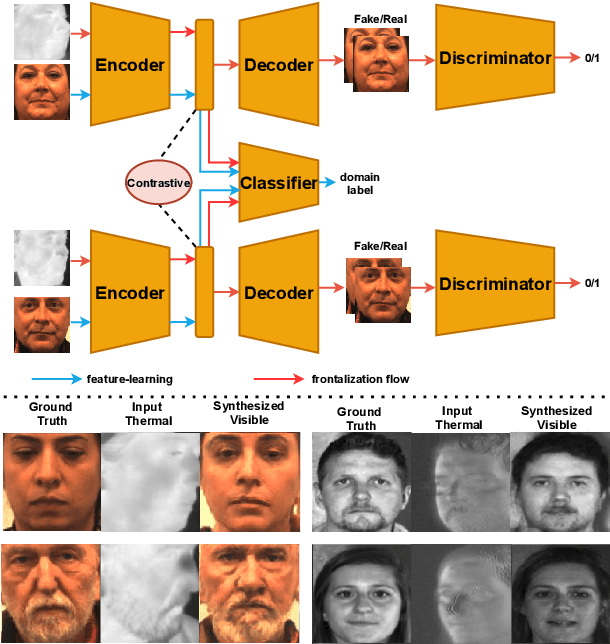
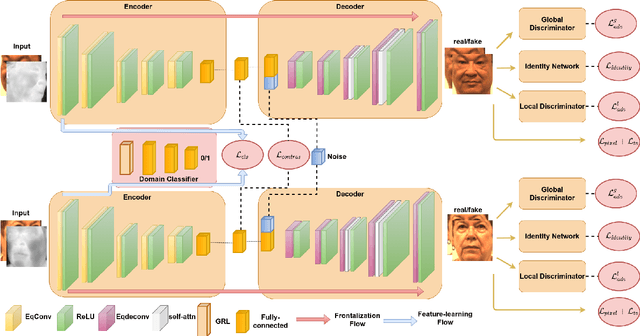
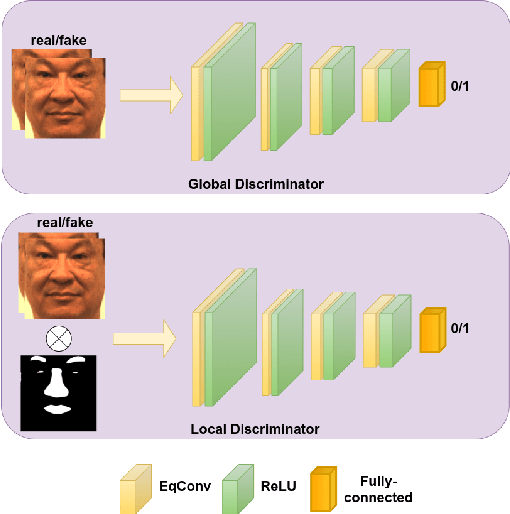
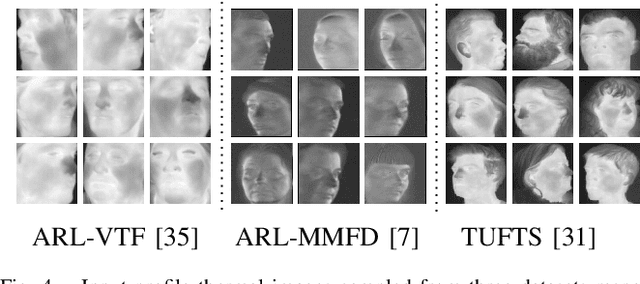
Abstract:Recent advances in deep convolutional neural networks (DCNNs) have shown impressive performance improvements on thermal to visible face synthesis and matching problems. However, current DCNN-based synthesis models do not perform well on thermal faces with large pose variations. In order to deal with this problem, heterogeneous face frontalization methods are needed in which a model takes a thermal profile face image and generates a frontal visible face. This is an extremely difficult problem due to the large domain as well as large pose discrepancies between the two modalities. Despite its applications in biometrics and surveillance, this problem is relatively unexplored in the literature. We propose a domain agnostic learning-based generative adversarial network (DAL-GAN) which can synthesize frontal views in the visible domain from thermal faces with pose variations. DAL-GAN consists of a generator with an auxiliary classifier and two discriminators which capture both local and global texture discriminations for better synthesis. A contrastive constraint is enforced in the latent space of the generator with the help of a dual-path training strategy, which improves the feature vector discrimination. Finally, a multi-purpose loss function is utilized to guide the network in synthesizing identity preserving cross-domain frontalization. Extensive experimental results demonstrate that DAL-GAN can generate better quality frontal views compared to the other baseline methods.
Simultaneous Face Hallucination and Translation for Thermal to Visible Face Verification using Axial-GAN
Apr 13, 2021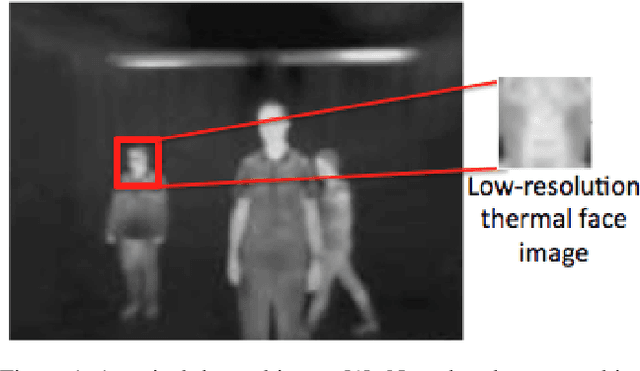
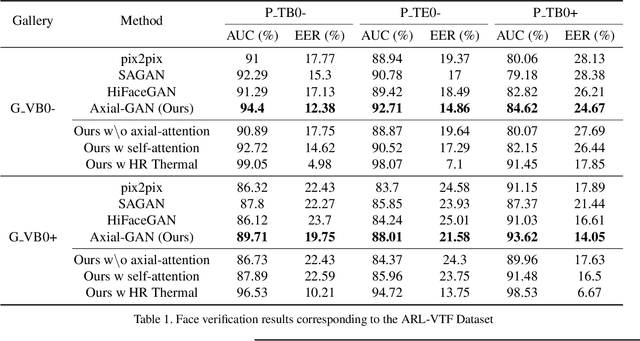


Abstract:Existing thermal-to-visible face verification approaches expect the thermal and visible face images to be of similar resolution. This is unlikely in real-world long-range surveillance systems, since humans are distant from the cameras. To address this issue, we introduce the task of thermal-to-visible face verification from low-resolution thermal images. Furthermore, we propose Axial-Generative Adversarial Network (Axial-GAN) to synthesize high-resolution visible images for matching. In the proposed approach we augment the GAN framework with axial-attention layers which leverage the recent advances in transformers for modelling long-range dependencies. We demonstrate the effectiveness of the proposed method by evaluating on two different thermal-visible face datasets. When compared to related state-of-the-art works, our results show significant improvements in both image quality and face verification performance, and are also much more efficient.
 Add to Chrome
Add to Chrome Add to Firefox
Add to Firefox Add to Edge
Add to Edge